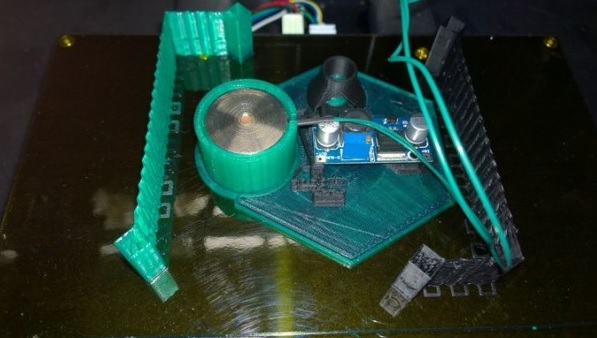Pull out the crystal ball and tea leaves; it’s time to look at trends affecting PCBs that are expected to pick up steam in 2015. Spurred by the connectivity of the Internet of Things, consumers are demanding faster and less expensive, yet better products and services ready to operate now. Manufacturing and operations, as a result, will move from being labor-driven and technology-enabled to a model with more automation, greater intelligence, less human intervention in manufacturing, and more efficient processes.
So, which trends are appearing, maturing, and exploding during 2015? Here are a few to keep an eye on.
Materially important
As PCBs change to reflect high-performance and ultra-miniaturization demands, materials that can handle the challenge are coming to the forefront. Green-glass fiber/epoxy laminates have long dominated PCB structural substrates and represent the largest use of glass fiber globally. While their numbers are still growing, fueled by mobile devices, digital control in automotive and white goods, and new robotic applications in health, manufacturing and defense, they do have some formidable competition. The demands for improved thermal management, higher performance, greater speed, and the reality of 3D printing are causing designers to rethink materials.
As digital circuits operate at higher speeds with MPUs and signal converters performing billions of operations per second, circuit performance falls when PCB materials don’t match up. At higher speeds, these materials must maintain the signal integrity of high-speed digital signals and handle analog millimeter-wave signals with low loss and distortion.
Approximately half of today’s PCBs are multilayer. While they currently only comprise approximately 5 percent of PCBs, rigid-flexible PCBs are expected to grow rapidly based on demand for high performance and ever-shrinking boards. Flexible PCBs for LCD and touch screen use are also gaining ground, equating to a great deal of material activity throughout 2015.
Charge it
During 2015, wireless charging will become even more entrenched. Many of today’s phones already feature wireless-charging technology. Resonant wireless charging (inductive) provides a convenient and safe way to charge and power millions of consumer and industrial devices. It delivers efficiency, cost, and safety and provides a reliable transfer of power to ensure that devices are always available. A technology that has been around for quite a few years, conductive wireless charging is making a comeback in automotive applications, being repurposed for in-car use where setting devices on a pad is easily achieved.
The limitations of lithium-ion battery technology, used in virtually all portable devices, are well-known. Battery advancements include sodium-based complex metal hydride for less expense, greater power, and stability. Watch as solid-state battery technology that holds more power compared to lithium-ion moves into mobile power packs based on battery improvement.
Making sense of it all
As devices get smaller, smarter, and more contextually aware, conversely, the amount of data is growing. As a result, analytics will be embedded in everything. Deep analytics that grasp context will provide additional capabilities to smart machines. Advanced algorithms will help devices and machines understand their environments, learn, and become autonomous. Prototype autonomous vehicles, robots, and virtual personal assistants are here now and are evolving to usher in the age of highly advanced machine helpers.
3D printing: Is it time, or wishful thinking?
Looking deeper into that crystal ball, it’s natural to wonder what the implications of 3D printing will be for the PCB industry in the near future. At this time, the technology is not quite where it needs to be, but it’s getting closer. While many products easily may lend themselves to 3D printing, creating components pose some additional challenges. Given the variations, the different materials used, their physical properties and the fact that components are shrinking in size faster than design engineers can readily adjust to, it could be at least a few years before 3D printers will be used on a regular basis to create components.
Instead, the most likely initial impact of 3D printing to the industry will be in creating printed circuit boards, jigs for press fits, fixturing, and perhaps surface mount board repair. Recently, Kickstarter, a company formed by former Microsoft executive Michael Toutonghi, announced plans for a new filament material that will make it possible to print circuits, wires, sensors, power connectors and other electrical components inside 3D-printed products. The goal of the new F-Electric filament is to streamline the manufacturing process, making it easier to build electronic capabilities inside 3D-printed objects.
 Source: GeekWire, 11/11/2014
Source: GeekWire, 11/11/2014
And the research says…
During 2015, manufacturing and assembly will adapt and likely blossom, but much differently than they have in the past. Increasingly, the industry will rely on partnerships and alliances to stay competitive in this rapidly evolving landscape. Gartner predicts an increased emphasis on serving the needs of the mobile user in diverse contexts and environments, as opposed to focusing on devices alone. This gives credence to why a rapid-response, high quality service partner is necessary to maneuver the rapid market changes that will gain traction in 2015.
By: Carolyn Mathas
Advertisement
Learn more about Advanced Assembly





